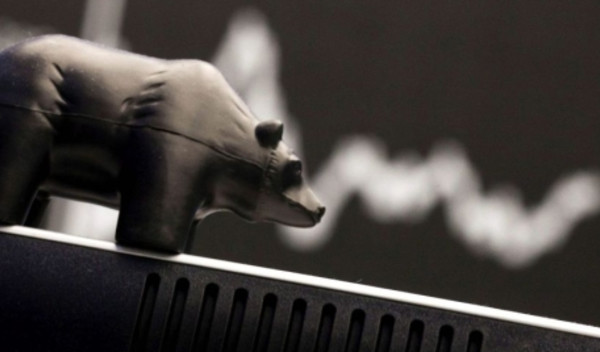

Since December 1999, the market has halved, recovered, halved again, and recovered again to a new high.
The roughly 10 per cent drop of the past few months has taken the index back to where it started.
Yet experts tell us we are at the top of a prolonged bull market, which must end soon. We believe they have correctly spotted an animal, but they have wrongly identified it.
We are confronted not by an aged and expiring bull, but by a rampant bear.
Indeed, the bear market is already well-established in many sectors, and may already have more or less run its course.
What we have seen over the past few years is a bull market in ‘growth’, ‘quality’ and ‘momentum’, and a bear market in more or less everything else. Until very recently, the expensive shares have been getting ever more expensive, and the cheap stocks ever cheaper.
But now the growth sectors – software and services, for example – which have been such favourites over the last decade, have been challenged in their turn.
The recent sell-off has been traumatic for investors, conditioned to seeing growth sectors act as safe havens in every sell-off since the end of the financial crisis. Today, they are falling faster than anything else.
Value investors, such as ourselves, who cannot invest in overvalued ‘growth stocks’ or ‘bond proxies’, have avoided the worst of the recent turbulence.
We don’t fear a bear market – for us that has already happened. All we need to do is stay calm and ensure our dividends are secure. The shares we own are cheap and will recover in due course.
Risk-off culture
Since 2000, investors have developed a culture of risk-aversion. Making money has become far less important than not losing it.
This is classic bear market thinking. Indeed, the phrase ‘risk assets’ did not exist in the 1990s.
In 2000, there were no absolute return funds, but today there are many large ones to choose from. The attraction of an absolute return fund is not the money it makes you, but the money you aren’t going to lose come the next crisis.
The protection given to you by absolute return funds may be less than you imagine.
We have noticed recently, some of their returns have been distinctly negative – not quite as absolute as investors have been led to believe. What the fashion for absolute return funds demonstrates most clearly is bear market thinking, which has become so natural to most investors, they no longer notice it.
The period since 1984, when I became a financial adviser, can be divided into two unequal halves.
From its inception in January 1984 until the end of 1999, the UK’s 100-share index rose from 1,000 to nearly 7,000 in a period of 16 years. Since January 2000, it has gone nowhere.
It follows there is a lot more value in the UK market now than there was in early 2000, and the potential for returns is much better today than it was then, even though it may not feel like it.
It also follows the vast majority of investors and commentators were optimistic at the end of 1999, following two decades of great gains, just as the vast majority are pessimistic today.
Reasons to be optimistic
In 1999, when shares were expensive, a wise investor could have avoided them. There was a perfect alternative to hand – cheap, high-yielding government bonds.
Today, there is an equally obvious alternative to ‘growth’ and ‘momentum’ – in the cheap, overlooked ‘value’ sectors.
Our suggestion is, do not make the mistake others are making – don’t get the wrong animal.
We have been in a long bear market so long many people cannot remember anything else – in sectors such as retail, banking, insurance, resources, construction and telecoms.
Bear markets don’t last forever. This one is already ‘long in the tooth’ and could now be in its final phase – the sharp derating of the darling assets of the past decade could be a harbinger of better times for the rest of the market.
This past year-and-a-half, spanning the final phase of the growth stock bubble, has been an unusually difficult period for value investors. We believe better times may lie ahead.
Tony Yarrow is portfolio manager of the TB Wise Multi-Asset Income fund



